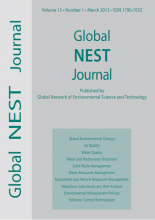It is well known that chlorine and its compounds, traditionally utilized for water and wastewater disinfection, react with some organic matter to form undesirable by-products, hazardous to human health, known as Disinfection By-Products (DBPs). In many countries very stringent limits for chlorination by-products such as trihalomethanes were set for wastewater reuse. Accordingly, the use of different oxidation/disinfection systems should be evaluated as possible alternative to chlorine. Ultrasound (US) was recently found to be effective for this purpose.Aim of this work is to review main US disinfection studies, pointing out ultrasound mechanisms as well as its effects in terms of different bacteria inactivation (Total coliform, Escherichia coli, Pseudomonas aeruginosa, Bacillus subtilis, Saccharomyces cerevisiae, Klebsiella pneumonia) at both laboratory scale and pilot-scale. To this end, several experimental results were discussed and both focal interest points and encountered problems were summarized. Moreover the intensification of cavitation phenomena by combined oxidation processes was overviewed and main advantages and disadvantages were pointed out, in order to address future research and promote efficient large scale operations. © 2014 Global NEST Printed in Greece. All rights reserved.
2014
Water and wastewater disinfection by ultrasound irradiation-a critical review
- Global Nest Journal
